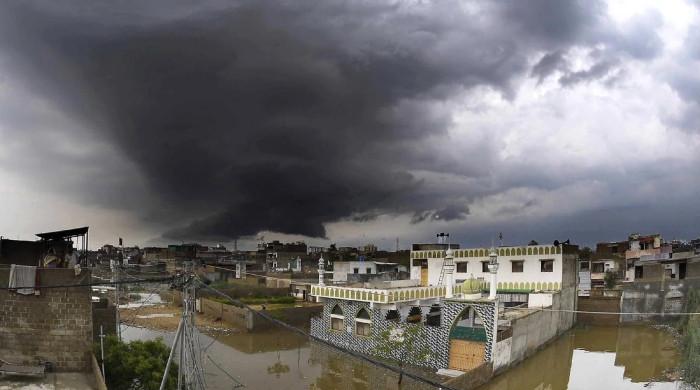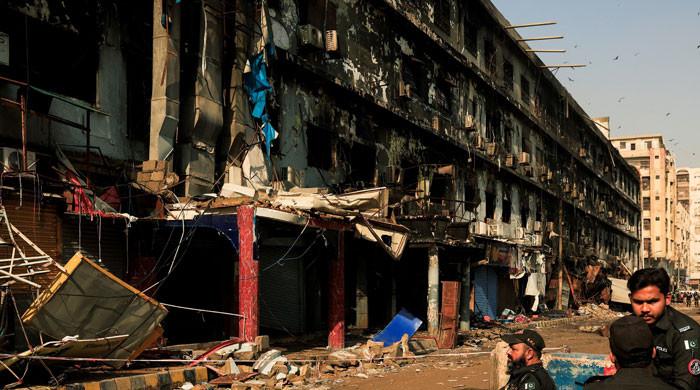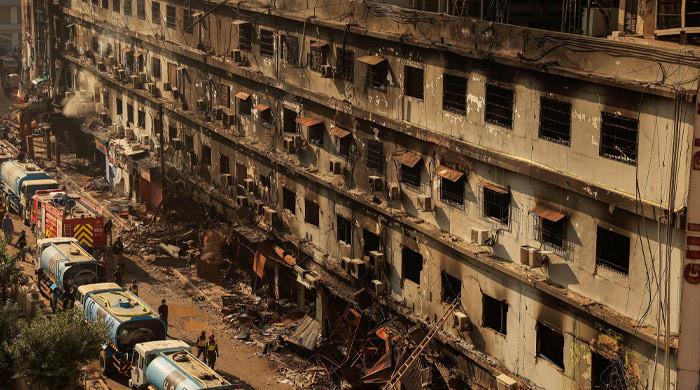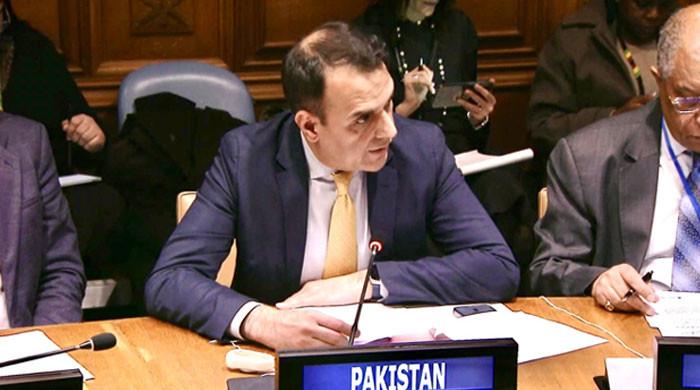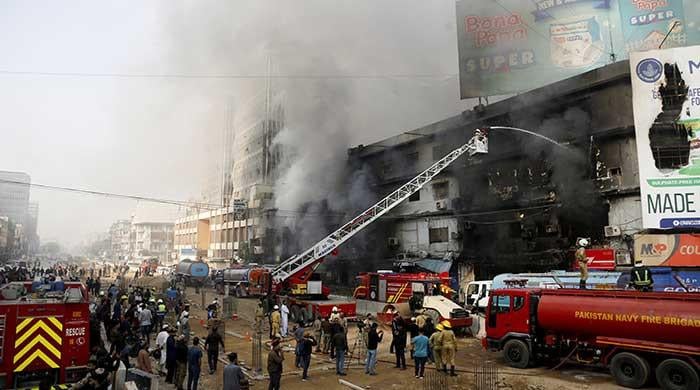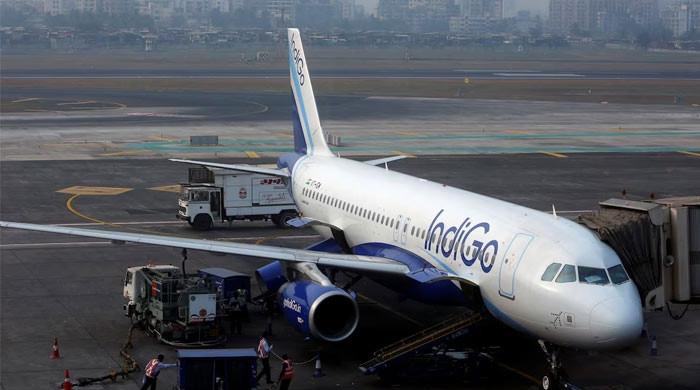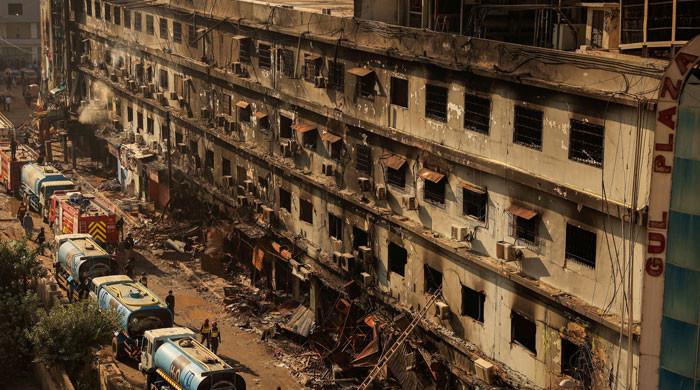Water shortage in Pakistan has become worse than projected: IRSA
Pakistan is facing an acute water shortage of 38% for irrigation purposes amid Kharif season
May 13, 2022
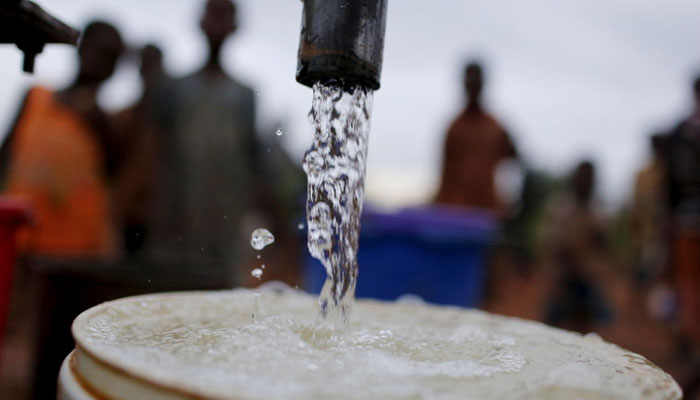
- Pakistan is facing an acute water shortage of 38% for irrigation purposes.
- IRSA earlier projected water shortage of 22%.
- Water minister says water shortage situation would improve by June 15.
ISLAMABAD: Pakistan is facing an acute water shortage of 38% for irrigation purposes amid the Kharif season which commenced on April 1 with the sowing of major crops, including cotton, sugarcane, rice and maize.
The Indus River System Authority (IRSA), regulating and monitoring the distribution of water sources of the Indus River among all the four federating units, gave a presentation to the National Assembly’s Standing Committee on Water Resources on Thursday.
The authority said that the water shortage has now turned worse than the earlier projected shortage of 22%. Presently, there is a water shortage of 38%, hitting hard the two major crop-producing provinces — Punjab and Sindh — and affecting the current crops sowing pattern.
Nawab Yousaf Talpur chaired the meeting and Federal Minister for Water Resources Khursheed Shah, Sindh’s Minister for Irrigation Jam Khan Shoro and other officials attended the meeting. The committee constituted a panel comprising representatives of the federal government, Punjab and Sindh to address the concerns of the provinces and give recommendations regarding the fair distribution of water among the federating units.
The committee will gauge water inflow and outflow positions at the Guddu and Sukkur Barrages and their subsidiary canals on Friday. At the same time, it is also tasked with giving recommendations regarding the fair distribution of water among the federating units.
Read more: World Bank stresses on improving water use efficiency in Pakistan
According to the IRSA, the inflows of the Indus River from April 1 to 30 at Tarbela were 13% less — 1.831 MAF compared to expected flows of 2.102 MAF. In contrast, the inflows of the Kabul River declined by 46%, Mangla by 44% and Chenab by 48%. The actual inflows during this period were recorded at 5.350 MAF compared to the projected 8.590 MAF, showing a shortage of 38%.
Rainfall below average
The IRSA also informed that the countrywide rainfall in April 2022 was 74% below average and was ranked as the second driest month since 1961. The rain in April remained below average all over the country. Punjab received 89%, Khyber Pakhtunkhwa 79%, Balochistan 79%, Azad Jammu and Kashmir 56% and GB 51%. The IRSA mentioned that the massive reduction in inflows from the Kabul River was unexpected.
Responding to a point of order raised in the National Assembly by several MNAs about the shortage of water in Sindh and Punjab, Minister for Water Resources Khursheed Shah said that the country is facing water shortage and the tail-end areas of Sindh and Punjab were suffering the most. He said the water shortage situation would improve by June 15.
He assured that all the provinces would be given water as per their share and the water shortage would be shared accordingly. He requested the Punjab government to provide up to 300 cusecs of water to the Cholistan areas of south Punjab from its share.
Earlier, the Council of Common Interests (CCI) Secretariat constituted a steering committee under the chairmanship of the minister for water resources to sort out the differences among the provinces.
Meanwhile, the water storage at the Mangla Dam has been recorded nearly at rock-bottom even during the peak summer inflow season, making it the lowest level ever recorded at this point of time with filling down by a whopping nine times against the 10-year average.
Read more: 'Pakistan to face severe water scarcity by 2025'
Against the Mangla Dam’s maximum filling capacity of 7.55 million acre-feet (MAF), the water storage on May 10, 2022, was recorded at just 0.151 million acre-feet over 1.539 MAF average storage recorded for the corresponding day in the last 10 years (2012 to 2021). This worrying development shows the Mangla Dam’s storage is down by a whopping nine times or 920%.
'Non-filling of Mangla Dam may spell disaster'
Keeping in view the abysmally low flows pattern, the filling of the Mangla Dam on the Jhelum River to the maximum conservation level becomes near impossible as more than half of the peak flow season has already lapsed.
In the evolving scenario, said a senior official, only a high flood on the back of widespread rainfall for a fairly long period of several weeks can lead to filling the dam to its maximum water holding capacity.
The potential non-filling of the Mangla Dam may spell disaster for the agriculture sector in the ongoing Kharif season and especially in the upcoming Rabi season when the strategic wheat crop is cultivated, he added.
The water storage at the Tarbela Dam was also short of the annual filling trend. With little relative improvement, the Tarbela Dam’s storage was down by 68.45% against the average level of the last 10 years. On May 10, 2022, the water storage at the Tarbela Dam on the Indus River was recorded at 0.168 MAF against the 0.283 MAF average storage recorded for the corresponding day in the last 10 years (2012 to 2021).
With such a low level of storage and meagre flows particularly in the Jhelum, Kabul and Chenab Rivers, the canal water shortage continues to hit standing crops. The Sindh province, being a lower riparian area, is also at the receiving end as far as water shortage is concerned. The low flows of water have particularly been witnessed in Sukkur and Kotri Barrages where people even rely on river flows for meeting their drinking needs.
Read more: Pakistan’s water taps to run dry by 2025
However, dry conditions in the Mangla Command area are stated to be a direct outcome of historic low flows in the Jhelum and Chenab Rivers. Punjab, being the main recipient of flows out of these rivers, is presently bearing the brunt of a colossal water shortage. As per the latest water situation in barrages and canals in Punjab, being fed from Mangla and Chenab Rivers in the absence of reasonable diversion from the Indus Zone, a huge deficit inflows is being witnessed in main canals.
Presently, the water requirement at the Taunsa Barrage is 21,500 cusecs while only 8,404 cusecs are available with a 61% reduction in inflows. Similarly, the water requirement at the Panjnad Barrage is 14,650 cusecs while there are only 4,642 cusecs, showing a reduction of 68%. The Trimmu Barrage requires 16,700 cusecs while only 10,700 cusecs are available with a drop of 36% inflows.
Sulemanki Barrage canals require 13,300 cusecs of water but only 6,506 cusecs are available with a reduction of 51%. The Islam Barrage is facing a 45% shortage of water while the Baloki Headworks at the heart of the Punjab province are facing a 36% shortage.
Resultantly, the Lower Bahawal Canal for Bahawalpur, which needs 5,062 cusecs but with a reduction of 65%, is getting only 1,800 cusecs. The Mailsi Canal needs 4,505 cusecs for Lodhran but only 1,962 cusecs are being operated with a 56% reduction in inflows. Overall, the canal system of Punjab needs a total of 84,517 cusecs of water but, at present, the whole system is facing a shortage of 47%, withdrawing close to 60,000 cusecs against the demand of 88,000 cusecs.
Originally published in The News





